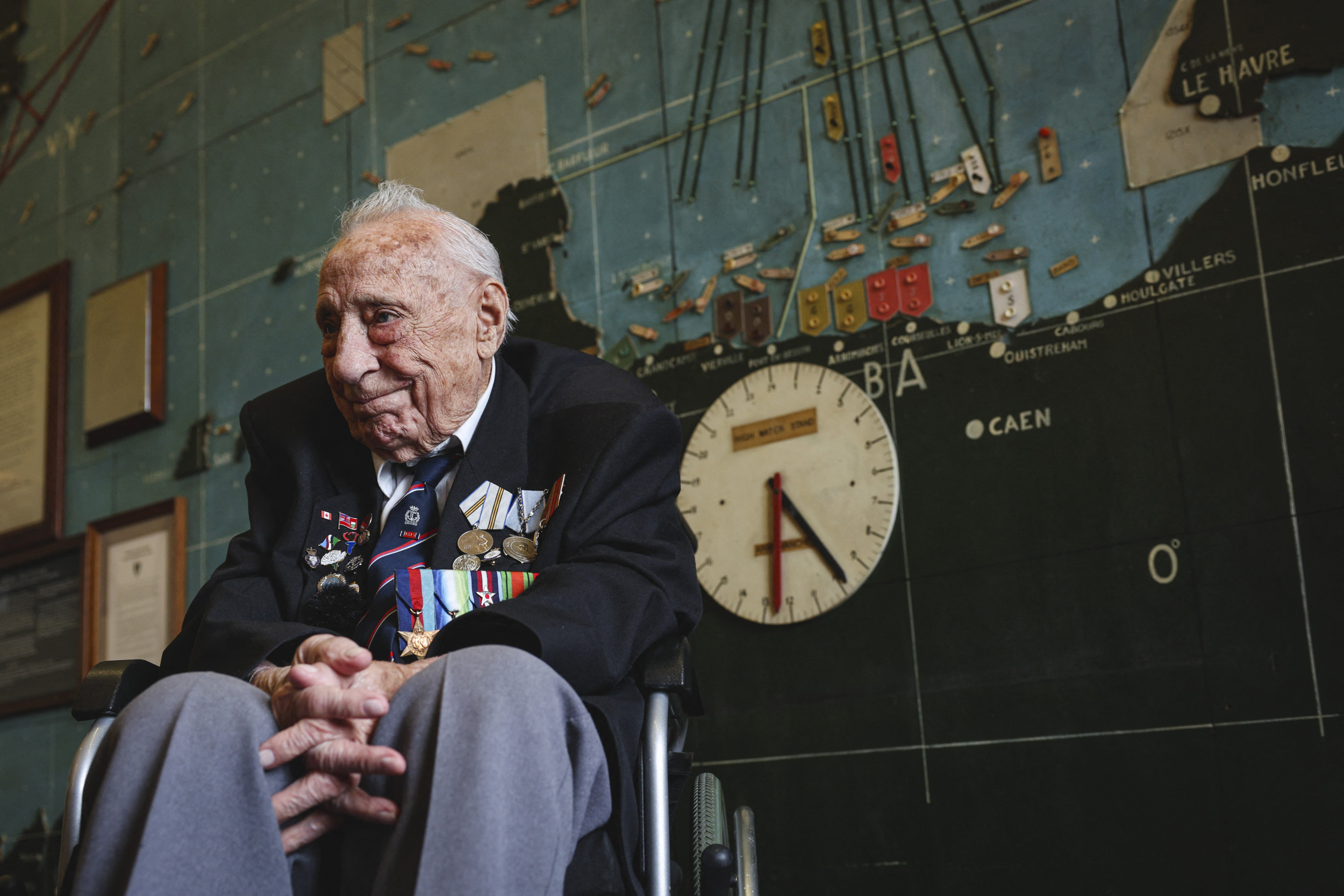
Two centuries ago, the Royal Navy utterly dominated the world’s oceans. Buoyed by the global empire its ships were tasked with expanding and defending, the nautical service maintained a “two-navy standard.” That is, it endeavored to be at least as strong as the next two navies combined.
Today, the British fleet—the navy and the supporting auxiliary—numbers just 73 ships displacing fewer than 1 million tons. That makes it a ninth the size of the U.S. fleet, a third the size of the Chinese and Russian fleets and barely bigger than the Japanese fleet, which doesn’t have a global mission.
But there’s a chance for a reversal, however modest, of this 200-year naval decline. The United States’ chaotic autocratic lurch under President Donald Trump—in particular, its abandonment of Europe and Ukraine in favor of closer ties to Russia—has compelled European countries to get a lot more serious about their own defense.
ADRIAN DENNIS/AFP via Getty Images
In London, Prime Minister Keir Starmer has pledged to boost UK military spending from 2.3 percent of gross domestic product today to 2.5 percent in 2027. His objective, he said, was for the United Kingdom to spend 3 percent of GDP on its armed forces by 2035. In the near term, the boost translates into an additional $17 billion a year for troops, equipment, and operations.
How much the Royal Navy will get, and what it might do with its possible windfall, remains to be seen. It should get the lion’s share—positioning the British fleet to recapture some of its former glory and extend a maritime security guarantee across Europe. The Royal Navy could become Europe’s navy.
It would make sense. “The UK is an island nation and historically its prosperity and security depends on control of the seas,” said Pete Sandeman, the director of Navy Lookout, a trade publication. “In broad strokes, the European powers should concentrate on building their land forces while the U.K. protects the maritime flanks.”
For the British, a fleet buildup is a better investment than, say, a major expansion of the tiny British Army. “The British Army is in a poor state, much of its own making and we should not waste more resources trying to reconstitute the BAOR”—the Cold War British Army of the Rhine in Germany—or a new ‘Army of the Vistula'” in Poland.
“The Army would need at least 40,000 more people to be considered a really meaningful force, but in the current climate recruiting and retaining this number is unrealistic,” Sandeman explained. “If the RN could recruit and retain just another 2,000 or so, it would be transformational.”
The extra people would be a critical first step toward a bigger Royal Navy. Fleet planners have unexpectedly laid up or decommissioned several ships in recent years, including precious frigates, amphibious assault vessels and support ships—not because the ships aren’t worth maintaining, but because they lack crews in a demoralized fleet that has struggled to attract and retain enough new recruits.
A realistic plan for a bigger and better fleet—one that pays better and respects the work-life balance the best professional sailors demand—could turn around the recruitment crisis.
Yes, the navy also needs to inject billions of dollars into ship-construction and deployments. But people must come first. “I would posit that retention and recruitment are more pressing challenges” than shipbuilding, said Sidharth Kaushal, a naval analyst with the Royal United Services Institute in London.
Indeed, the Royal Navy has already sketched the basic outline of an expanded shipbuilding scheme, one that could add a dozen or more high-tech vessels to the front-line fleet. To reinforce its depleted flotilla of surface combatants—currently numbering just eight old Type 23 frigates and six newer Type 45 destroyers—the fleet is building two new classes of frigate: the submarine-hunting Type 26 and the multi-mission Type 31.
Additional orders on top of the eight planned Type 26s and five planned Type 31s—or examples of a hypothetical Type 32—would add badly-needed capacity to an overstretched escort force, which is responsible for shepherding the Royal Navy’s two aircraft carriers while also protecting British waters from intruding Russian ships. The existing frigates and destroyers can barely handle these mandatory taskings—to say nothing of sailing hundreds or thousands of miles to wage war with a powerful foe.
If this bigger, more powerful fleet seems highly conjectural, it’s because it is. Even with the planned spending rise and the urgency of a more assertive Europe as the United States turns away, there’s always a chance the government in London prolongs decades of “sea-blindness” that have largely squandered the British naval legacy.
Let’s hope not.
David Axe is a reporter and filmmaker in South Carolina and the author of the graphic novel WAR IS BORING. He has a Substack, Trench Art.
The views expressed in this article are the writer’s own.
